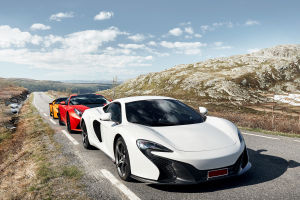Since 1885, when German engineer Daimler invented and manufactured the world's first motorcycle powered by a gasoline engine, the development of motorcycles has undergone more than 100 years of significant changes.
The original motorcycle, now preserved in the Deutsches Museum in Munich, Germany, looked vastly different from modern motorcycles in terms of appearance, structure, and performance.
Over a century ago, gasoline engines were still in a primitive stage of development, and vehicle manufacturing was akin to the technology used for horse-drawn carriages. The original motorcycle had a wooden frame crafted by carpenters, wooden wheels with an outer layer of iron, and a framework beneath the engine consisting of several square wooden boxes.
The engine, a single-cylinder fan-cooled unit, transmitted power to the rear wheel through a two-stage reduction drive system of belts and gears. The seat was saddle-shaped and covered in leather. With a cylinder displacement of 264mL and a maximum power output of 0.37kW at 700 rpm, which is only one-fifth of a modern basic motorcycle, it could reach a top speed of 12km/h, not much faster than walking.
Due to the lack of cushioning devices like springs, this motorcycle was dubbed the "bone-shaker," as riding it on 19th-century cobblestone streets was almost as uncomfortable as a punishment.
Despite its rudimentary nature, this original motorcycle paved the way for continuous evolution and improvement, leading to the billions of modern motorcycles seen today. In addition to German motorcycles, American motorcycles, notably those produced by Harley-Davidson, also shine brightly. The first commercially available motorcycle produced by Harley in 1903 featured an engine with a displacement of 409mL and a power output of 2.94kW, mounted on a bicycle frame.
Motorcycles are a product of time, reflecting the scientific and technological achievements of different eras. Each stage of motorcycle development bears the imprint of technological progress. The inability to use the original motorcycle was due to the lack of basic components that were beyond the capabilities of the scientific and technological knowledge of the time, relegating it to the confines of laboratories.
The development of motorcycles resembles ascending steps, with each phase reaching greater heights. Since the 1970s, motorcycle production has embraced advancements such as electronic ignition, electric starters, and disc brakes, followed by exhaust purification technology and ABS anti-lock braking systems in the 1990s.
These advancements have transformed motorcycles into advanced vehicles characterized by aesthetic appeal, superior performance, ease of use, and agility, making them a significant symbol of contemporary civilization. In particular, high-displacement luxury motorcycles have incorporated advanced automotive technology, achieving unparalleled levels of excellence.
The evolution of motorcycles is a vivid reflection of technological progress and engineering innovation. From wooden frames to modern composite materials, from single-cylinder low-power engines to multi-cylinder high-performance ones, motorcycles have traversed more than a century, continuously ascending to higher levels.
Today, motorcycles are not just means of transportation; they are cultural symbols representing freedom, speed, and passion. With continued technological advancements, motorcycles will further integrate into our lives, bringing more convenience and joy. In the future, the development of motorcycles will continue to be driven by human creativity and technological innovation, creating a brighter and more exciting future for us all.


